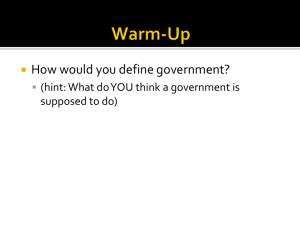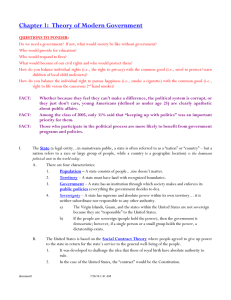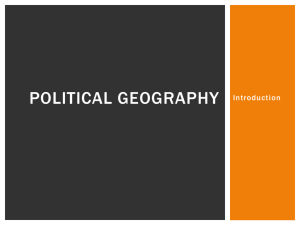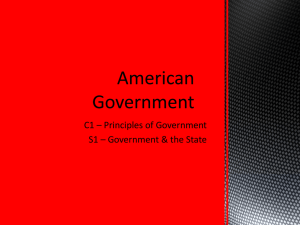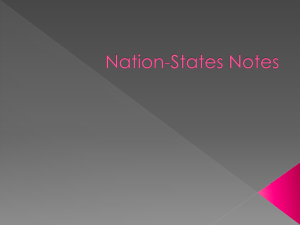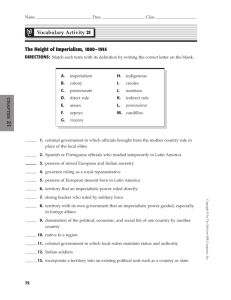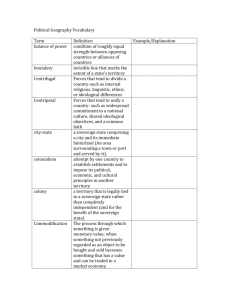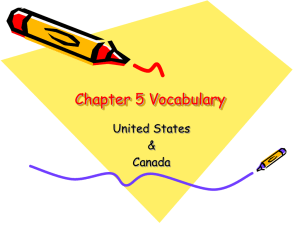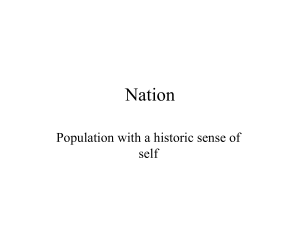WEATHER AND CLIMATE: What's the deal with Earth and Sun?
advertisement
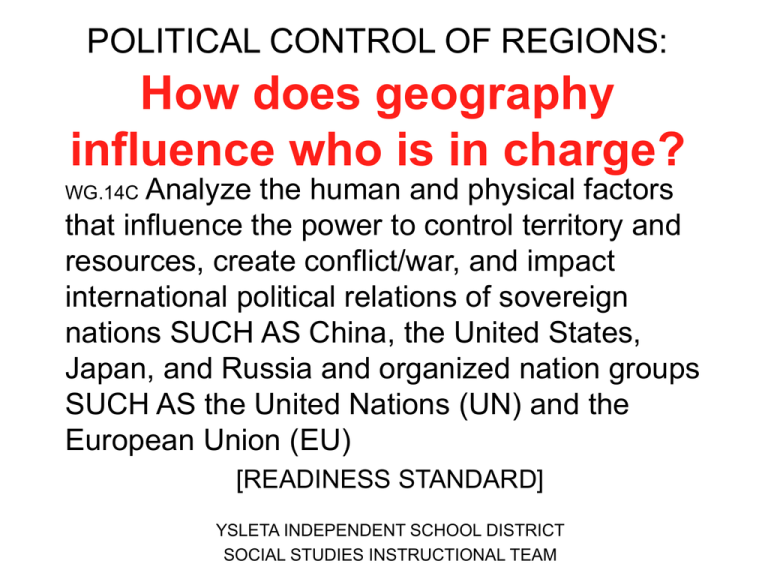
POLITICAL CONTROL OF REGIONS: How does geography influence who is in charge? Analyze the human and physical factors that influence the power to control territory and resources, create conflict/war, and impact international political relations of sovereign nations SUCH AS China, the United States, Japan, and Russia and organized nation groups SUCH AS the United Nations (UN) and the European Union (EU) WG.14C [READINESS STANDARD] YSLETA INDEPENDENT SCHOOL DISTRICT SOCIAL STUDIES INSTRUCTIONAL TEAM Which words do you know, and which do you need help with? Political Control Resources Factors Power relations Sovereign nation International Organization Territory Economic Control What makes a region worth controlling? What makes a region difficult to control? What if TWO countries want to control this region? What should happen? What if STRONGER countries want to control WEAKER countries? Should this be okay? What if STRONGER countries want to control WEAKER countries? What if this is why? What if STRONGER countries want to control WEAKER countries? What if this is why? How come this didn’t work? Let’s see what we know… Can you answer now, or do you need a hint? Which of the following generalizations can be made about the role of physical geography in Great Britain’s effort to control the American colonial territory? A Ability to control newly acquired French territory was made easier by its location west of the Appalachian Mountains. B British attempts to control trade and smugglers were likely made easier by the location of the English colonies along the eastern seaboard. C Communication between colonial leaders and British Parliament for the purpose of compromise was severely delayed due to the great distance separating the colonies from the “mother country.” D All of the above. Let’s see what we know… Can you answer now, or do you need a hint? The Stamp Act is an example of which of the following? A An attempt to control territory through economic means. B An attempt to control territory through ethnic conflict. C An attempt to control territory through trade restrictions. D All of the above. What do these regions have in common that makes them worth controlling? Let’s see what we know… Can you answer now, or do you need a hint? Which hypothesis below might explain the interest Europeans had in India from the 16th century through the 20th century? F India had control of the passes in the Himalayan Mountains that allowed deeper travel into Asia. G India was on the land route for Marco Polo and offered trade in coffee and cocoa. H India was on the sea route to Asia and offered spices and products like cotton to the Europeans. J India was never interested in becoming more industrialized like the West and welcomed Europeans. What are ways sovereign nations try to balance control and resource needs? European Union Let’s see what we know… Can you answer now, or do you need a hint? Which of the following is a way that Africa is trying to stem the violence that is part of so many African's daily lives? F sending a continental army into troubled areas to keep the peace G arming tribes who have had atrocities committed against them H forming organizations to help Africa be more like the European Union J aligning themselves again with colonial powers for security purposes Talk to each other, and then talk to me… • Analyze the human and physical factors that influence the power to control territory and resources, create conflict/war, and impact international political relations of sovereign nations SUCH AS China, the United States, Japan, and Russia and organized nation groups SUCH AS the United Nations (UN) and the European Union (EU) WG.14C • How does geography influence who’s in charge? Resources • • • • http://www.un.org/en/aboutun/index.shtml http://www.citizen.org/Page.aspx?pid=531 http://europa.eu/about-eu/index_en.htm http://world-geography.org/asia/344-jakotatriangle.html • http://quizlet.com/5424389/the-jakota-triangleflash-cards/
